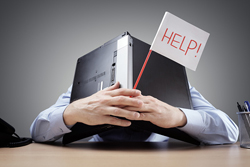
by Nancy Walsh, Director of Admissions Operations, University of Illinois at Urbana-Champaign
Erin Mason, an associate registrar at the University of Connecticut, presented information on job burnout using the new poster session option at the 2018 AACRAO annual meeting. If anyone remembers my fall Connect "Field Notes" article on this very topic, you will understand why I readily agreed to cover this session!
Mason explained that there are two ways that job burnout can develop – progressively or at once.
What burnout looks like
The three dimensions of job burnout include:
- emotional exhaustion,
- inefficacy (low personal achievement) and
- depersonalization (cynicism).
Those who suffer from job burnout could experience one dimension or multiple ones. Type A personalities and younger employees are more prone to experiencing job burnout. The latter really surprised me as I assumed burnout didn’t settle in until employees were more in their mid-careers. Mason and others in attendance explained that younger employees haven’t developed proper coping skills yet and are also more driven to succeed quickly, both of which can lead to burnout.
Symptoms of job burnout can include:
- irritability/anger,
- frustration,
- anxiety,
- depression,
- forgetfulness,
- pessimism,
- stress and
- exhaustion.
Self-care is key
Mason emphasized the best way to avoid or work through burnout is by taking care of yourself! Advocating for yourself, setting boundaries and changing your perspective are ways to help ease burnout. Take a lunch break, don’t check work email after hours, pick up a new hobby that takes your mind off work, and take your vacation days!